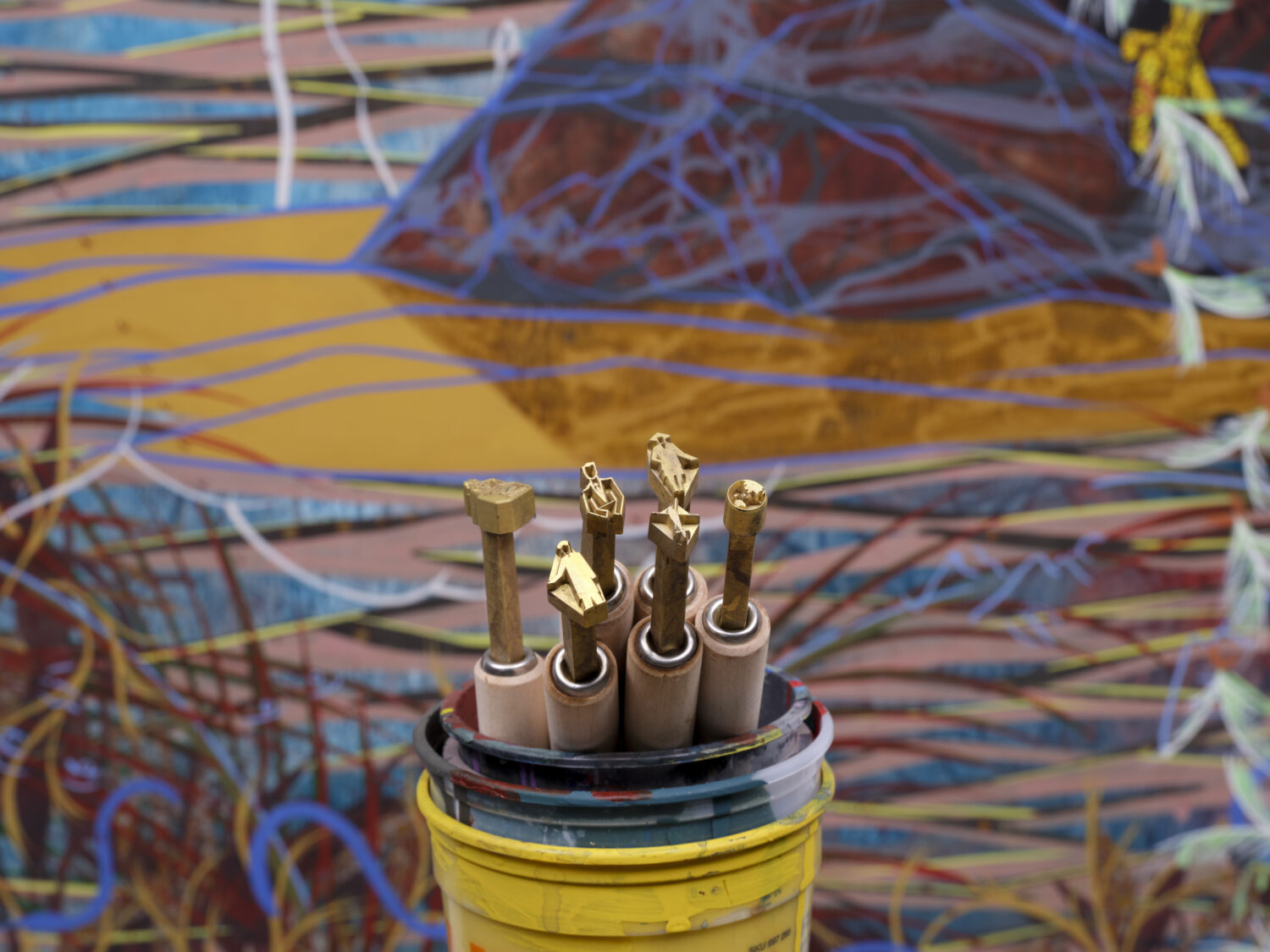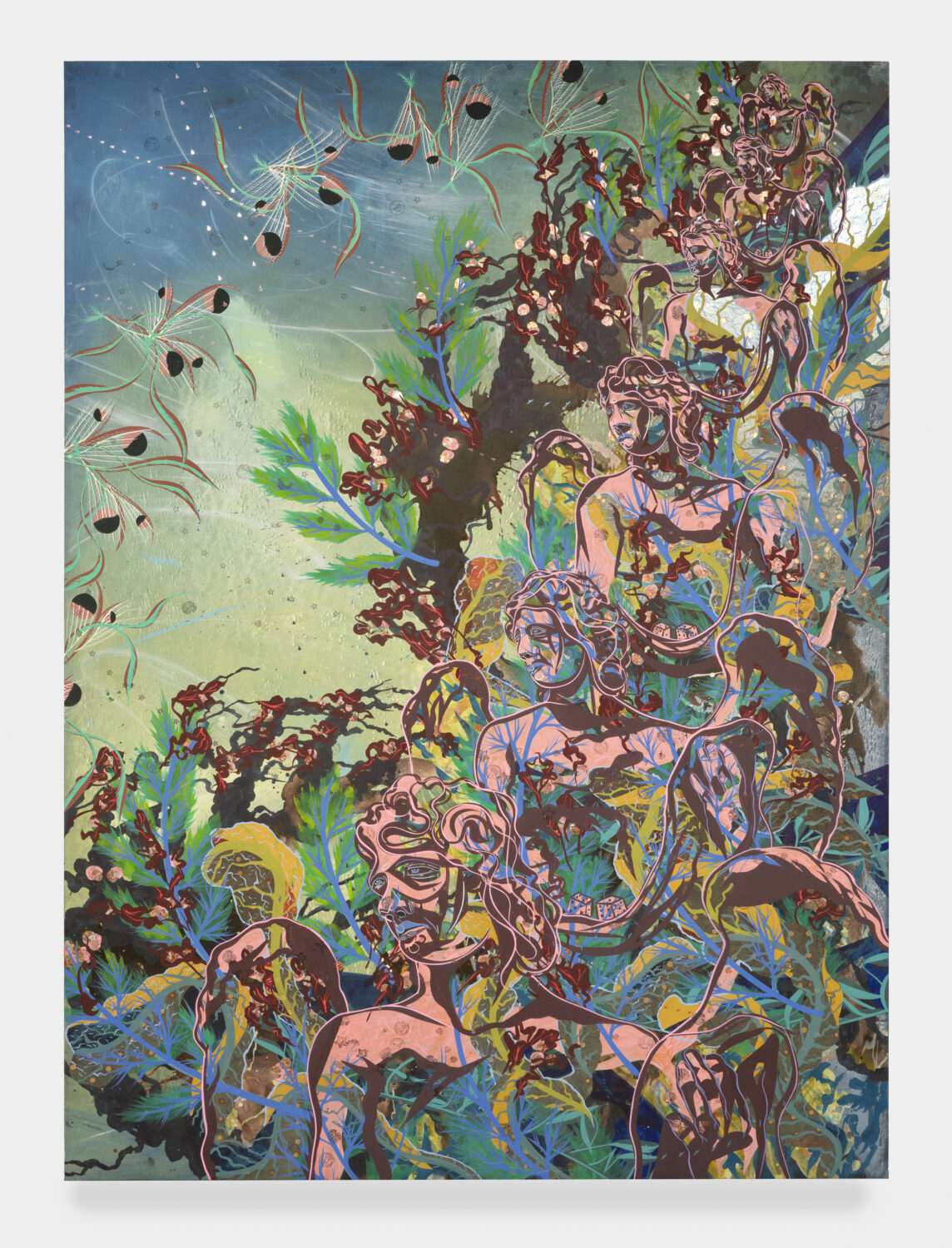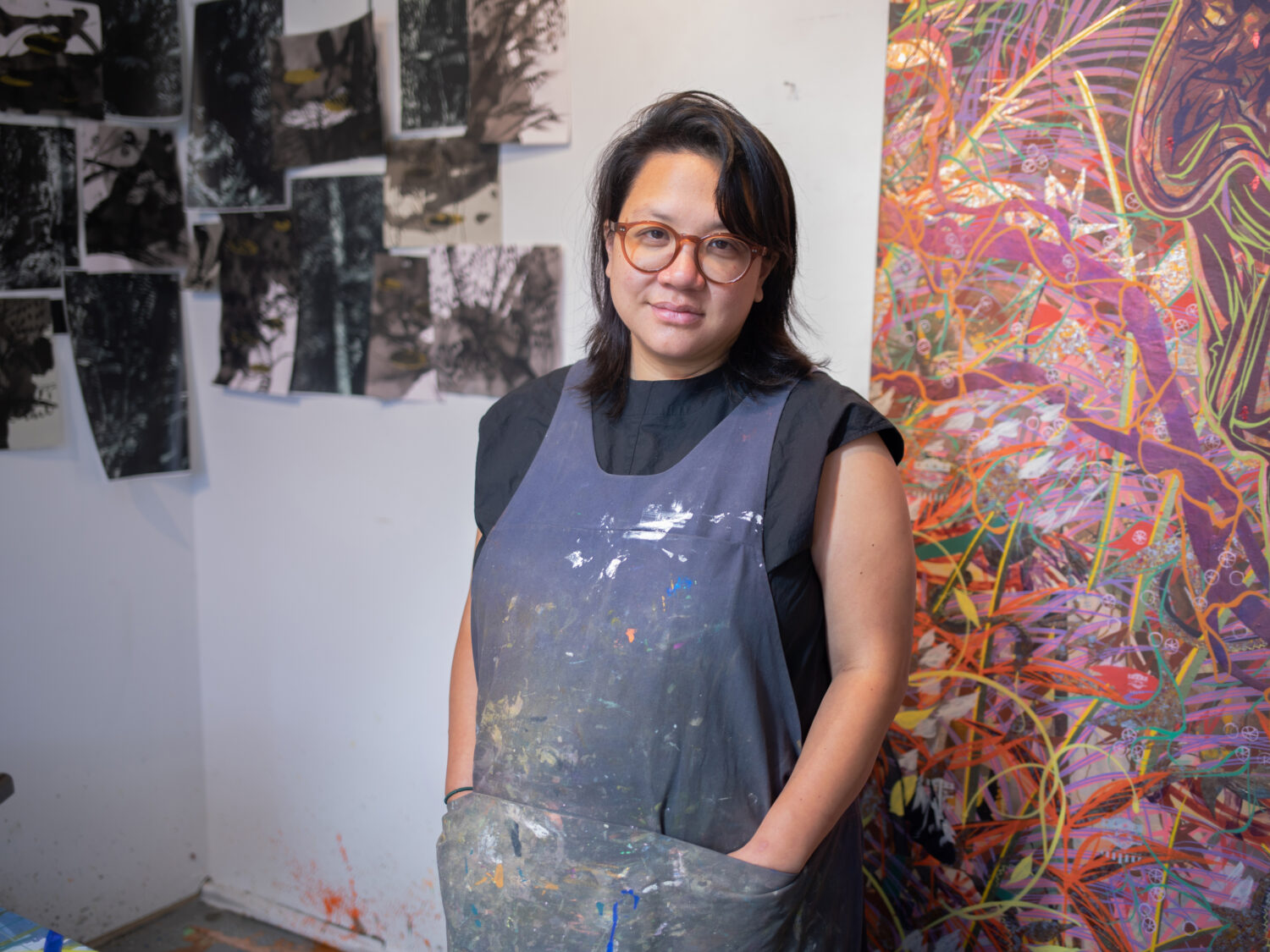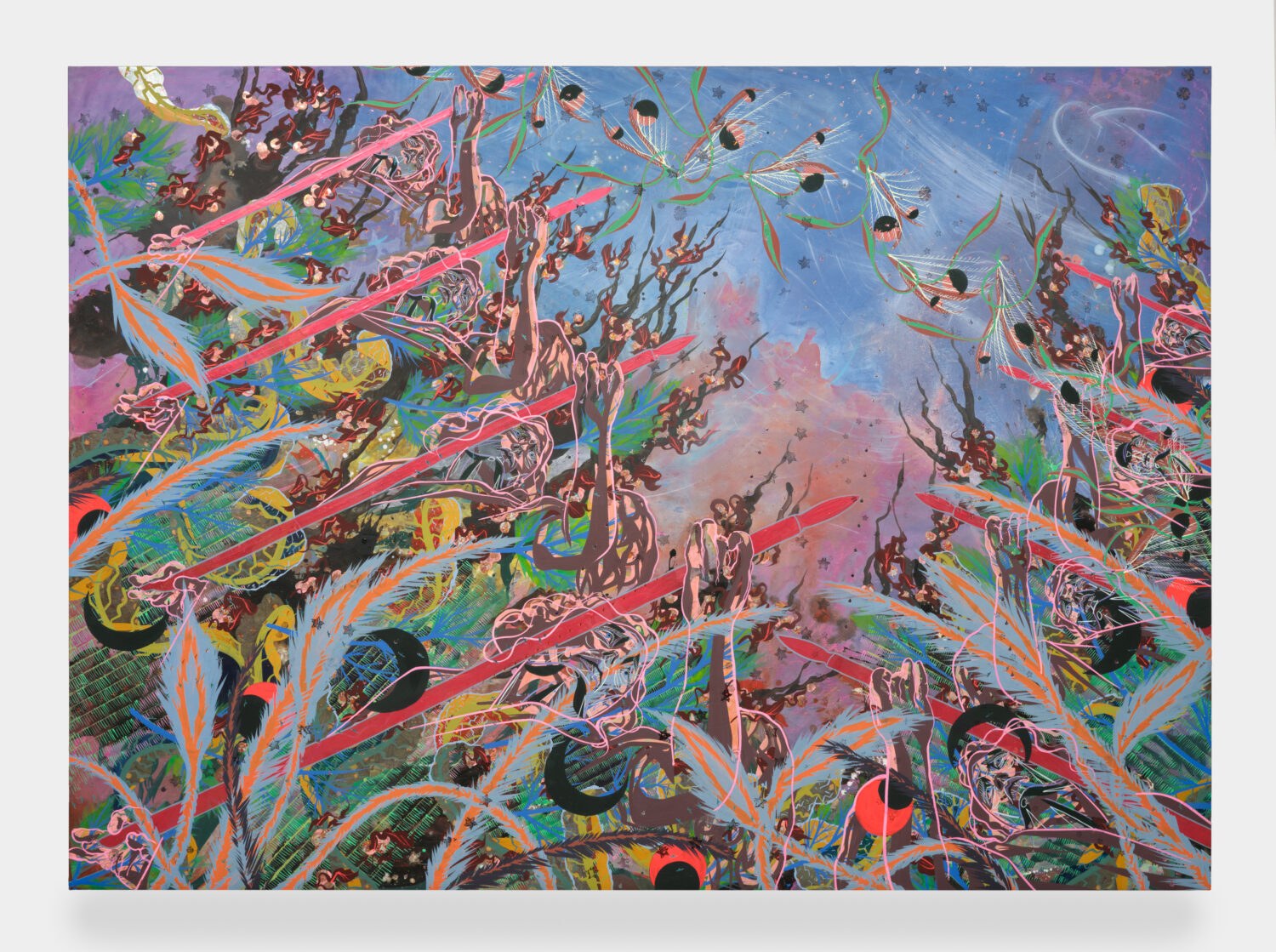Interview: In the Studio with Tammy Nguyen
By Keshav AnandVietnamese American artist Tammy Nguyen’s work oscillates between painting, drawing, printmaking, and various publishing projects. The artist is behind Passenger Pigeon Press, an independent publisher collaborating with scientists, journalists, writers, and other artists to create politically astute and, crucially, widely accessible content. Nguyen’s collaborative, research-driven approach is exploratory, delving into history, scrutinising the present, and envisioning prospective futures.
Following her major exhibition at ICA Boston, the artist is preparing for her first solo show in the UK, titled A Comedy for Mortals: Purgatorio, presented by London’s Lehmann Maupin. Intersecting geopolitical realities with fiction, Nguyen’s richly painted works address lesser-known histories through a blend of myth and visual narrative. To learn more about the artist’s cross-disciplinary projects and her upcoming exhibition, Keshav Anand spoke with Nguyen.

Keshav Anand: How have you approached creating the works for A Comedy for Mortals: Purgatorio, opening at Lehmann Maupin?
Tammy Nguyen: I tend to build my exhibitions by first thinking about how to hold the space down, aiming for an amount of work that will make the show feel full. Then, I create an outline — similar to how one might begin a piece of writing — of paintings, works on paper, and artist books. The works always vary in scale, and I think about how each artwork will carry certain themes across the show. I always want to give the viewers a full experience — almost like giving them a very full and satisfying meal. I want my exhibitions to connect with viewers from many distances, whether they are eight meters away to ten centimetres away or their nose is practically touching a painting or nestled inside an artist book. In this way, I try to give my audience a true breadth of encounters — a gestalt of ideas and feelings.
KA: Could you expand on the influence of Dante’s Divine Comedy on your work?
TN: The Divine Comedy not only inspired this body of work, but also provided a preliminary structure for me to build three exhibitions, one based on each epic. The first exhibition, Inferno, opened last year at Lehmann Maupin Seoul. This spring, Putgatorio opens at Lehmann Maupin London, and Paradisio will open in New York in 2025. I have always been interested in working with canonical texts that have shaped ideologies — more specifically, I’m interested in taking these types of works and juxtaposing them against other seemingly-unrelated histories to the point of collapse. Through the process of artmaking, I try to make disparate subjects so intimately related that it almost seems like they were intertwined narratives from the start.

In these three exhibitions, I use the Divine Comedy as a metaphor for the geopolitical theatre of the Cold War. In Purgatorio, Dante and Virgil are depicted alongside angels from the Vatican, leaders from the Bandung Conference, dinosaurs from an ancient time, and Jesus Christ. These characters weave in and out of a lush world overflowing with ferns, seashells, strings of war machines, and Luna moths.
KA: What do you think the artist’s role is in society today?
TN: There are so many different kinds of artists that connect with people in different ways that I don’t know if I can say that the artist serves a singular role. Rather, I think that because artists have assigned themselves the great job of expression, they inherently have generous relationships to the people in their lives, immediate communities, and beyond. Sometimes artists’ work has a profound effect on people, engaging them in deep reflection or compelling them to adopt a new perspective. But more often, I think that the effects of art are modest, like making someone’s day a little brighter — and we can always use a little bit of that.

KA: How was your publishing project, Martha’s Quarterly, born?
TN: Around 2014, my work started to present overtly political materials, such as documents from the USAID and old military maps. After completing a project called Primate Cities, which explored the military and ecological histories of Son Tra Mountain, I felt that my work, which was presented in a fine art context, was too limited in its reach. The artist book in particular was only experienced by those who came to the exhibition. I felt the content needed to be shared more widely, especially since the military histories I was presenting have such relevant consequences for modern Vietnam. At the same time, I was becoming more and more interdisciplinary in my research.
Martha’s Quarterly is the main project produced by my publishing platform, Passenger Pigeon Press, which I started in the Fall of 2016. It aims to publish handmade democratic multiples, mainly elevated zines, that unite people working in disparate fields. The publications strive for political nuance in both form and content, and are often made with unconventional book structures, inviting the viewer to interact in new ways.

Passenger Pigeon Press is named after the passenger pigeon, a now-extinct species of bird. Martha’s Quarterly is named after Martha, the last passenger pigeon of its species who died in the Cincinnati Zoo in 1914. I imagine this press as a resurrection of the species in the form of publishing. The pigeons fell to their demise due to over killing, preventing the birds from being able to breed and keep the species generative. Had people lived alongside them sustainably — hunting them responsibly while also allowing them to breed — they would be around today. It’s this nuance that serves as my “North Star” for this platform — there is both death and life, good and bad, and mostly a lot of in-between in my publishing work.
KA: What are you currently reading?
TN: A Shining by Jon Fosse and Tree Spirits Grass Spirits by Hiromi Ito, translated by Jon L Pitt.
Tammy Nguyen’s A Comedy for Mortals: Purgatorio will run at Lehmann Maupin, London from 13 March – 20 April 2024.
Feature image: Tammy Nguyen in her studio in Easton, Connecticut. Photo by Shaun Pierson. Courtesy the artist and Lehmann Maupin, New York, Hong Kong, Seoul, and London